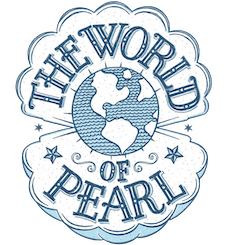Why you will not find a pearl at dinner…
There is a pretty good reason why you will not find a pearl at dinner tonight. That’s right, eat all of the oysters you can and you will not find a pearl.
Why not? Oysters produce pearls, right? And if you are eating oysters, they might, just might, have a pearl. Well, oyster is surprisingly a misnomer. The term “oyster” is reserved for mollusks from the family Ostreidae and those are the oysters we usually gobble up in our restaurants. They are not the same “oysters” that produce our pearls.
The oysters that produce pearls are technically not true oysters. They come from a suborder Pterioida.
So, a quick biology run-down.
All living things are divided into five distinct kingdoms. Sound familiar? Plants, Animals, Fungus, Microorganisms and Single Cell Organisms (okay, don’t quote me on that!) At least we can all agree an animal is an animal. Kingdoms are further broken down as phylum, then a class, order and family. So, an oyster that we eat and an “oyster” that produces a pearl all share the same kingdom, phylum and class:
Kingdom: Animalia
Phylum: Mollusca
Class: Bivalvia
So, they are all animals, they are all mollusks and they are all bi-valves. But then their classification begins to change.
(Also of note, the term bivalvia is simply a class name and not an anatomical description. There are some bivales which do not, in fact, have two valves. Confusing, I know!)
The oysters we eat are classified as
Order: Ostreoida
Family: Ostreidae
There are reasons for this classification based on certain indicators. Keep in mind, though, the history of bivalve classification has been varied and continues to change (based on the discovery of new evidence and changing perspectives).
The ostreidae are characterized by their thick shells and valves that are unequal in both size and form. The left valve is convex (meaning it curves outward like a bowl) and the right valve is either flat or concave (meaning it caves inward). They usually attach to something when they are young and the umbones (the protruding parts of each valve, above the hinge line) are asymmetrical.
The mollusks that produce pearls are different. The order of Pterioda is characterized by two abductor muscles that are not equal in size or there may only be one abductor muscle. The valves are unequal. The mollusk has strands of byssus (strong threads) which the it uses to attach to its substrate. The shell is nacreous and the shell layers form internally in a thin, crossing fashion.
It is interesting that all of the saltwater, pearl-producing mollusks belong to the same taxonomy classification all the way to the genus. So, all saltwater mollusks are classified as follows:
Kingdom: Animalia
Phylum: Mollusca
Class: Bivalvia
Order: Pterioida
Family: Pteriidae
Genus: Pinctada
The Pinctada fucata (also known as Pinctada imbricata fucata) is the Akoya pearl oyster which produces the Japanese and Chinese akoya pearls. The Pinctada imbricata is the Gulf pearl oyster which is responsible for the natural gulf pearls. The Pinctada margaritifera is the black-lip oyster. It creates the gorgeous black pearls (that I just explored in French Polynesia!). Finally, the Pinctada Maxima is the white-lip oyster or gold-lip oyster and they create the golden or white south sea pearls.
What are we missing? The Unionidae and Margaritiferidae orders which belong in freshwater and produce the Chinese freshwater pearls and the American river pearls.
So, back to why you will NOT find a pearl in your oyster dinner. The Ostreidae oysters that we eat are made almost entirely of calcite. Have you noticed the chalky white shells that oysters come in? That chalky white is calcite and is not as pretty as the aragonite which (sometimes along with calcite) makes pretty lustrous pearls. If these oysters produce a formation in their soft body the result will be more like a hard calcification without the luster of a beautiful pearl.
Happy eatin’!
India
I am a modern day treasure hunter who travels the world for gorgeous pearls and amazing adventures. I own a pearl jewelry and jewelry repair business, ThePearlGirls.com, with a cute retail store in Athens, GA. I also have a Pearl Travel business and travel blog at TheWorldofPearl.com.




I was ablе to find good advice from your articles.